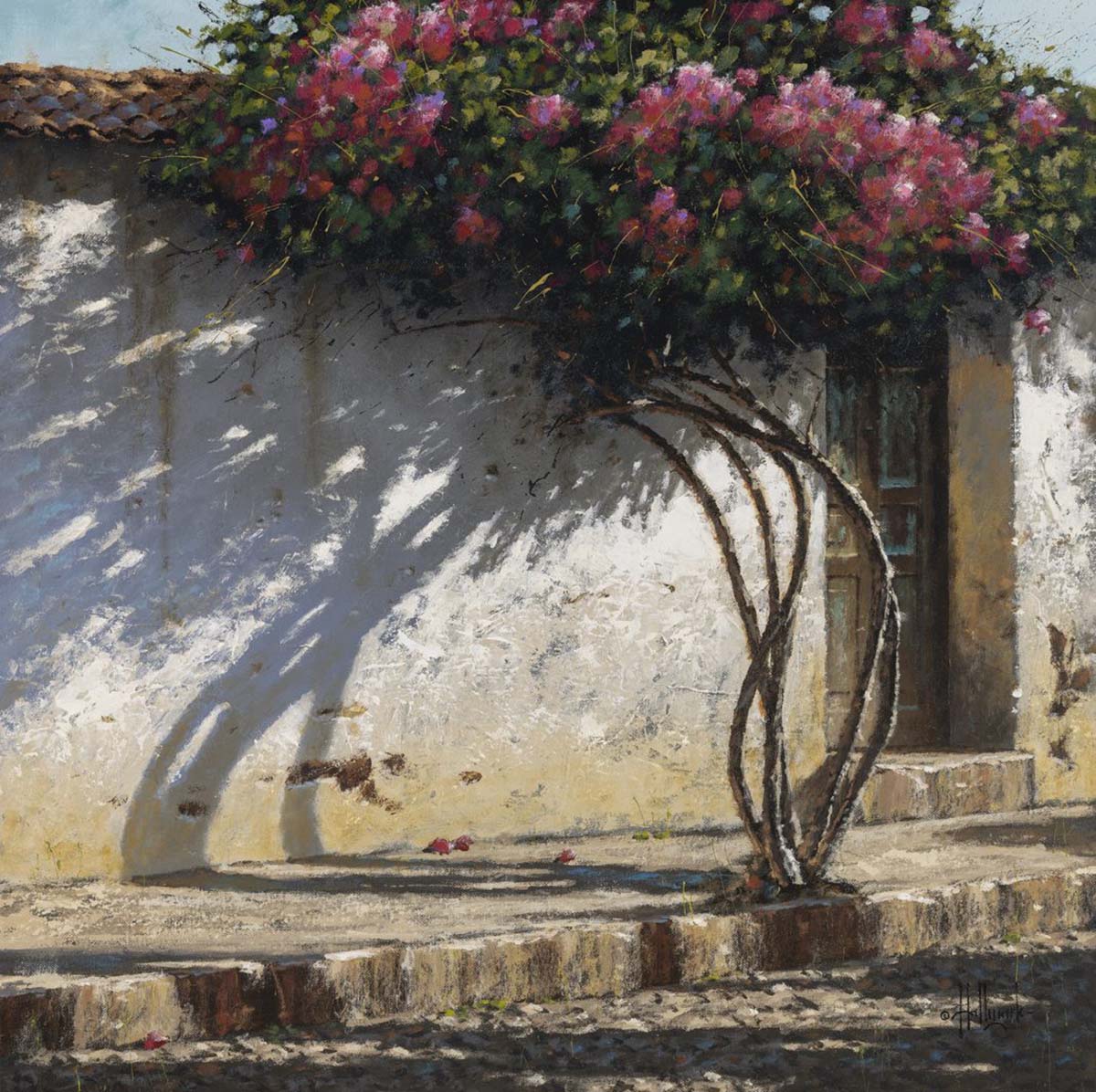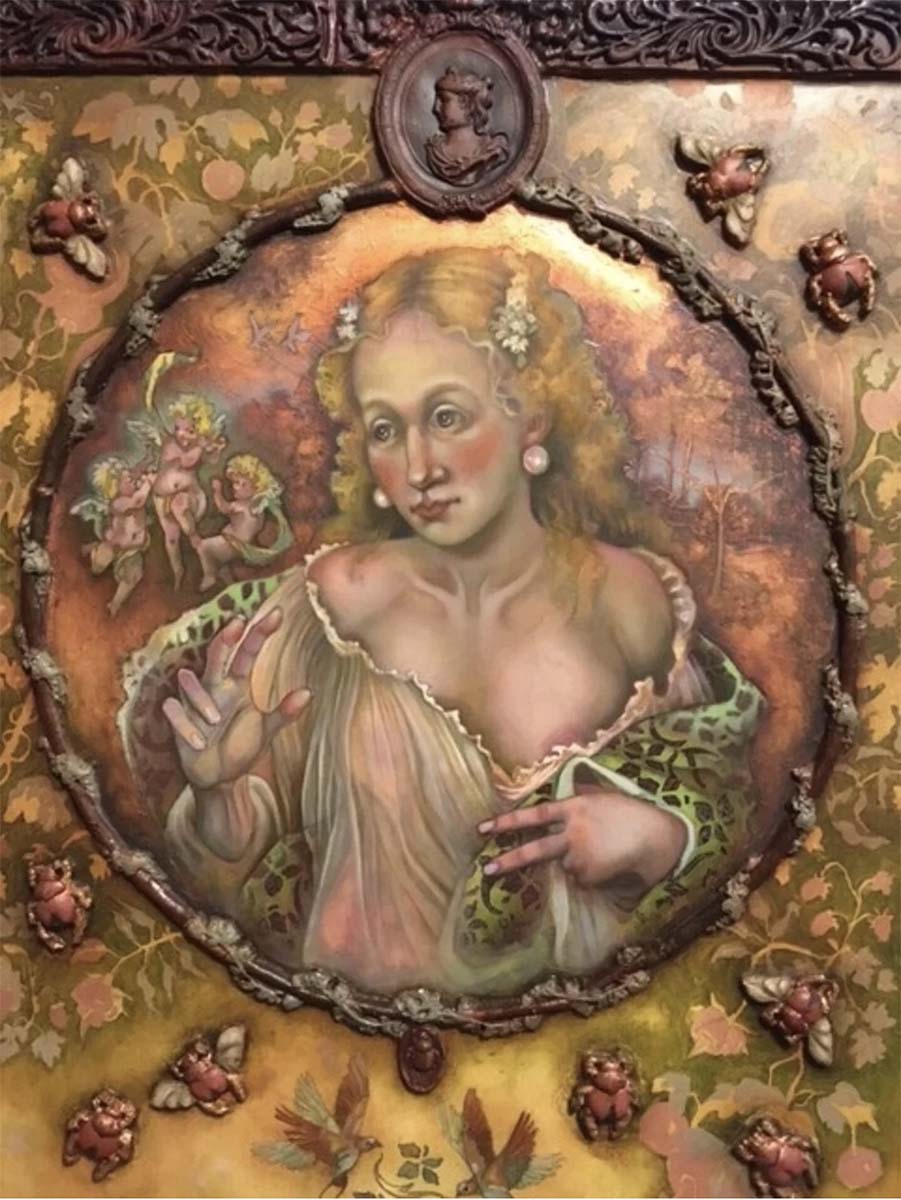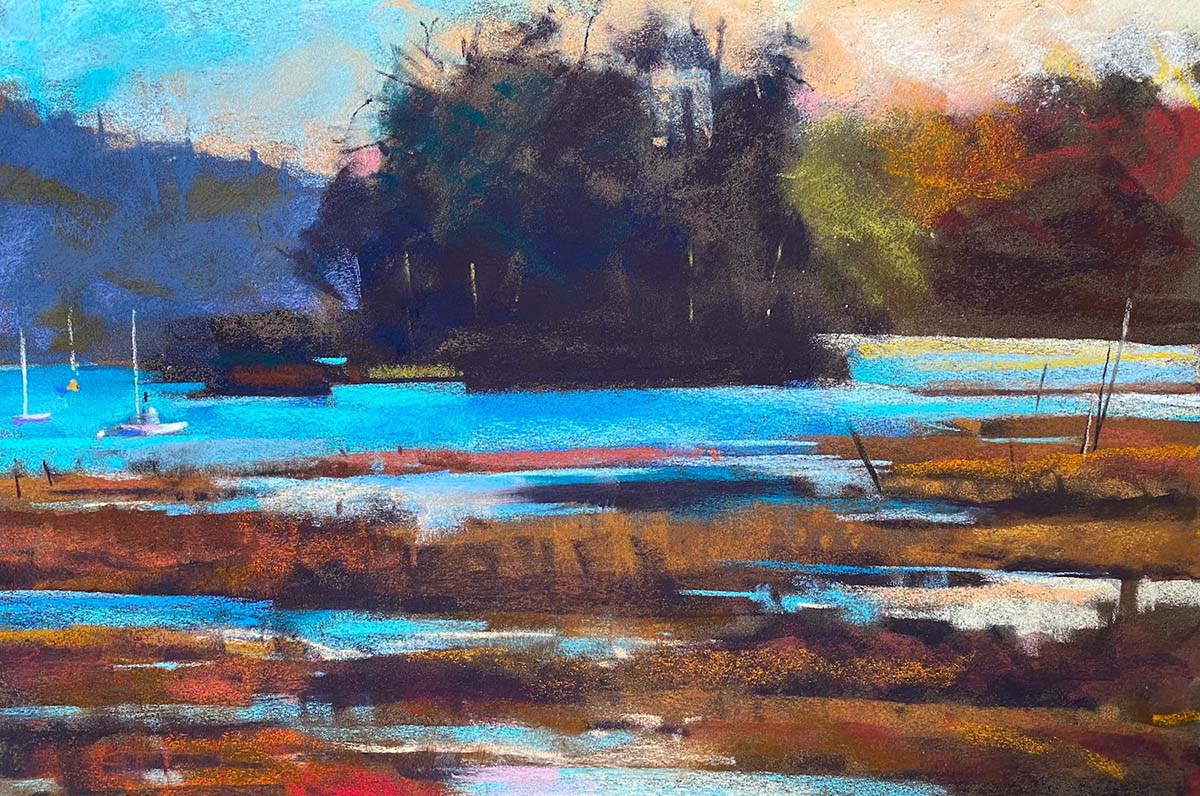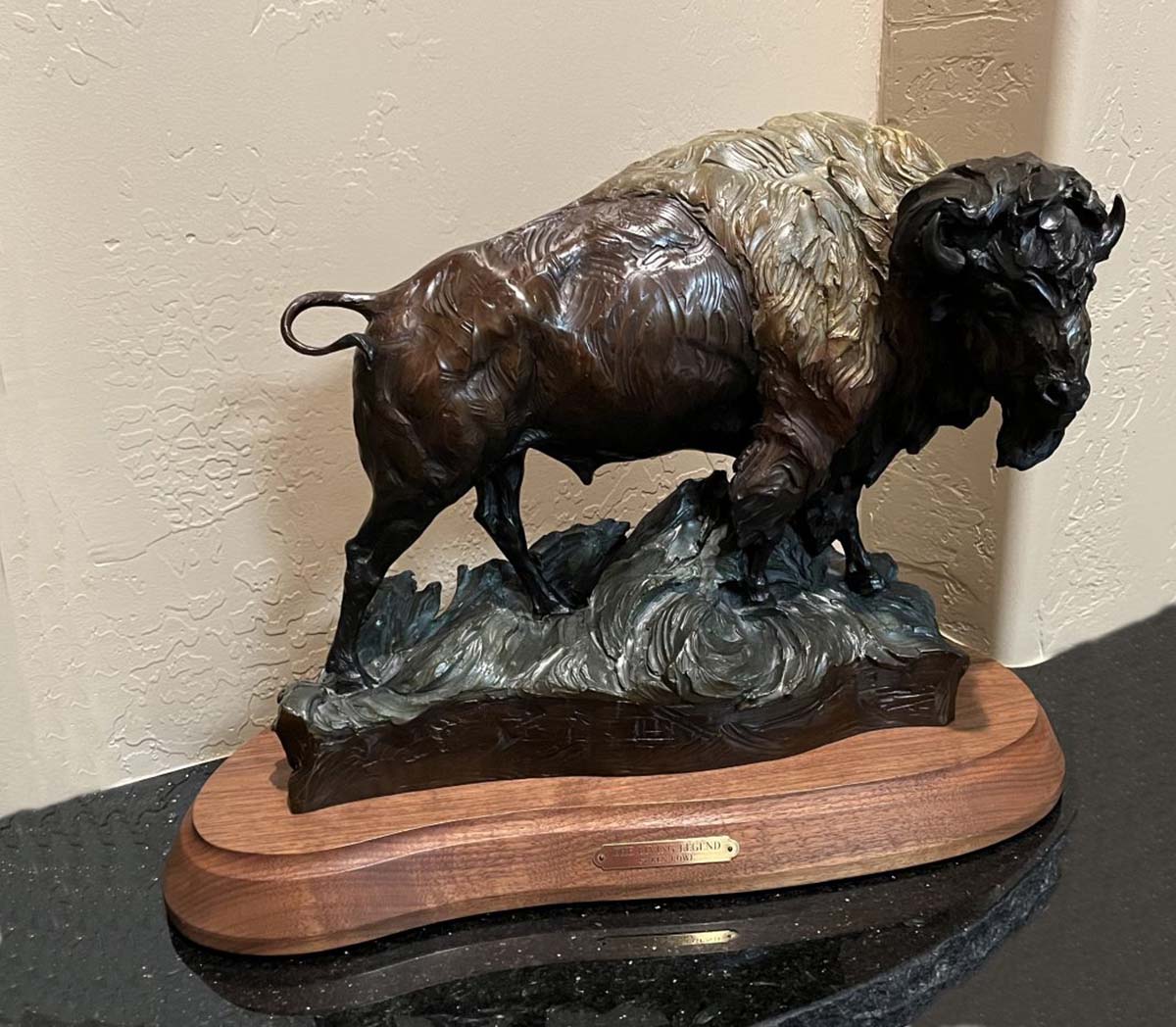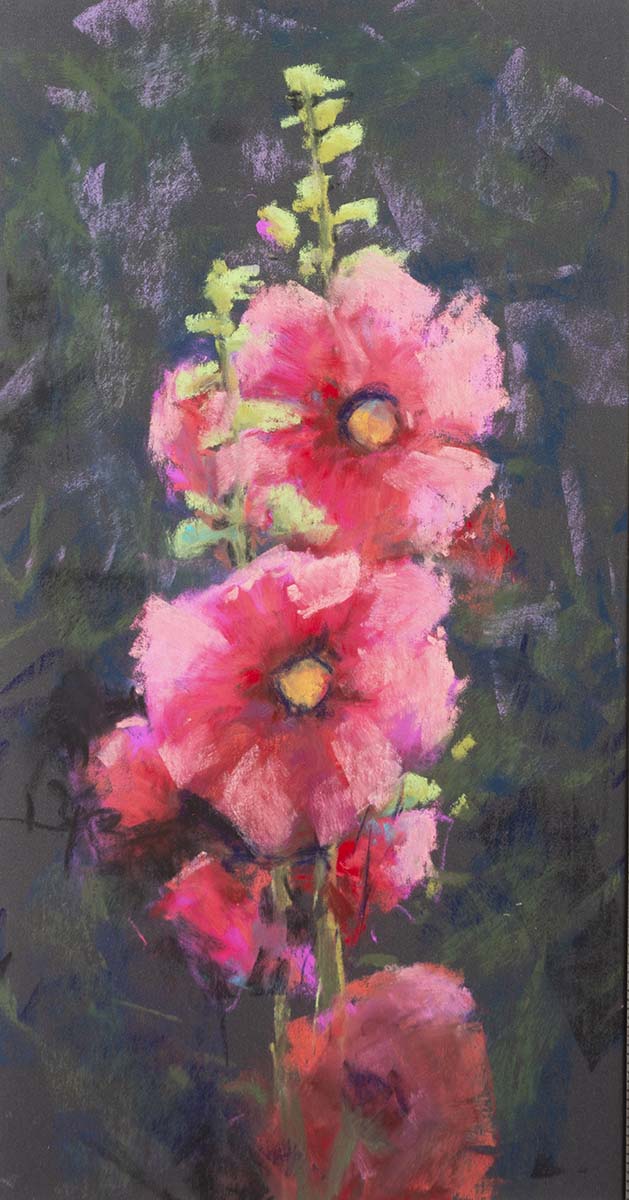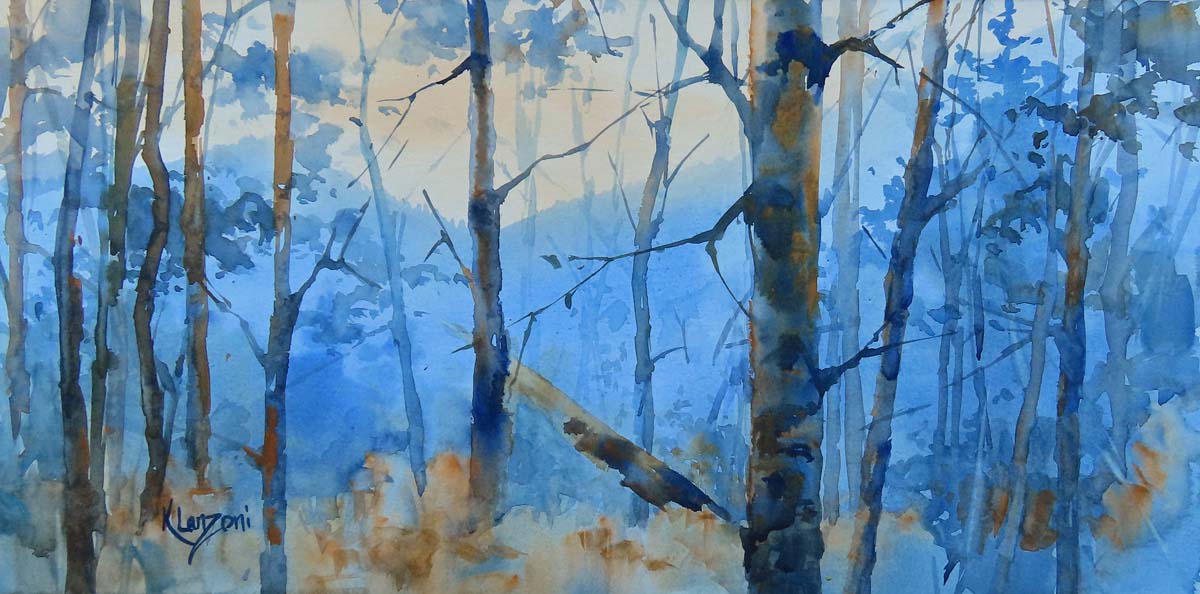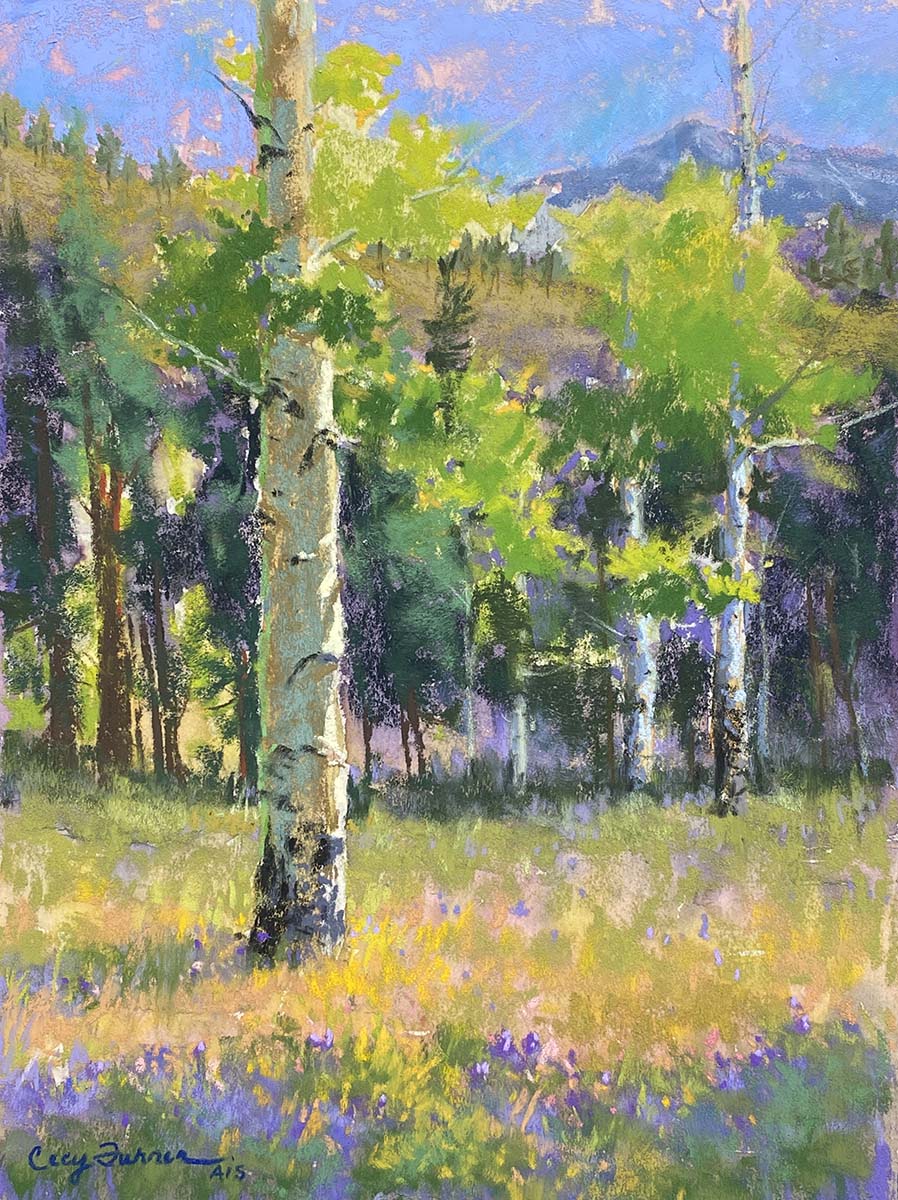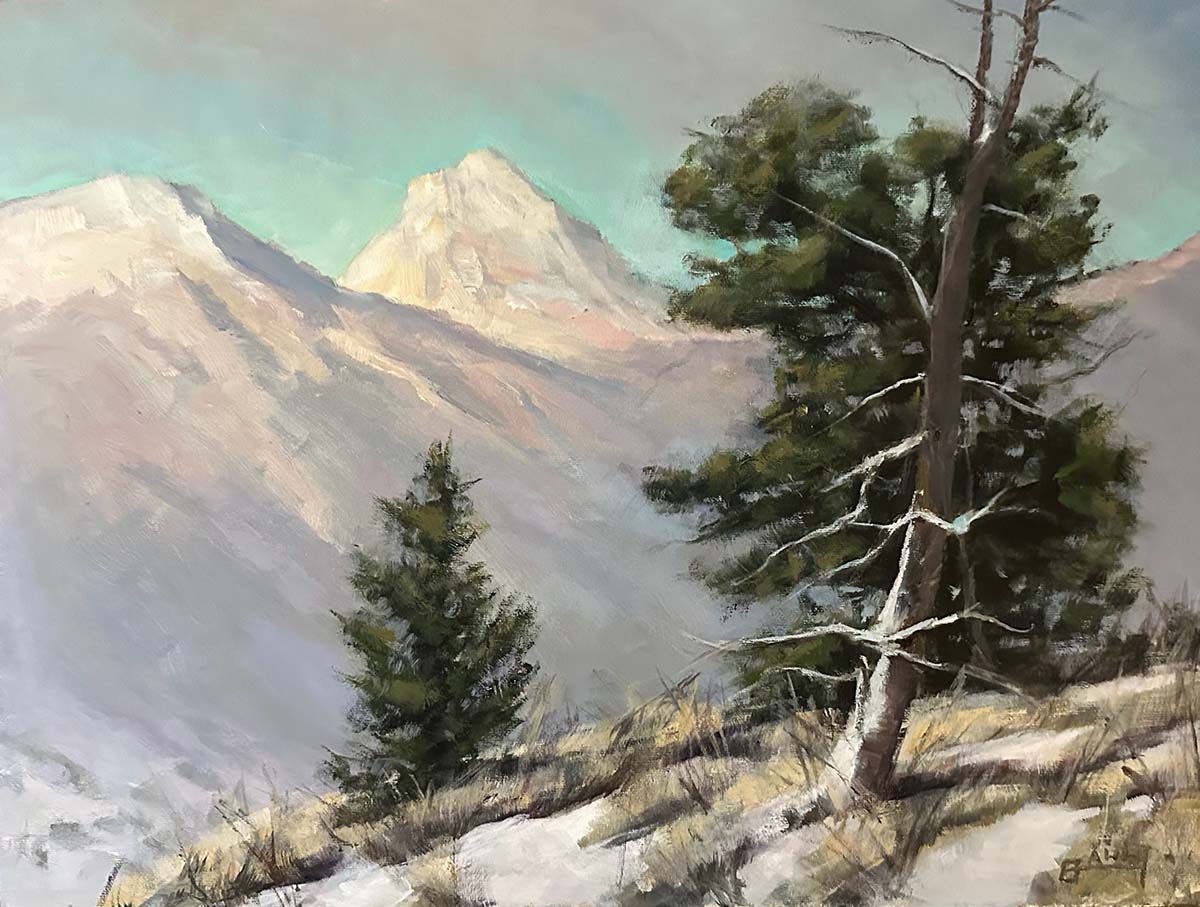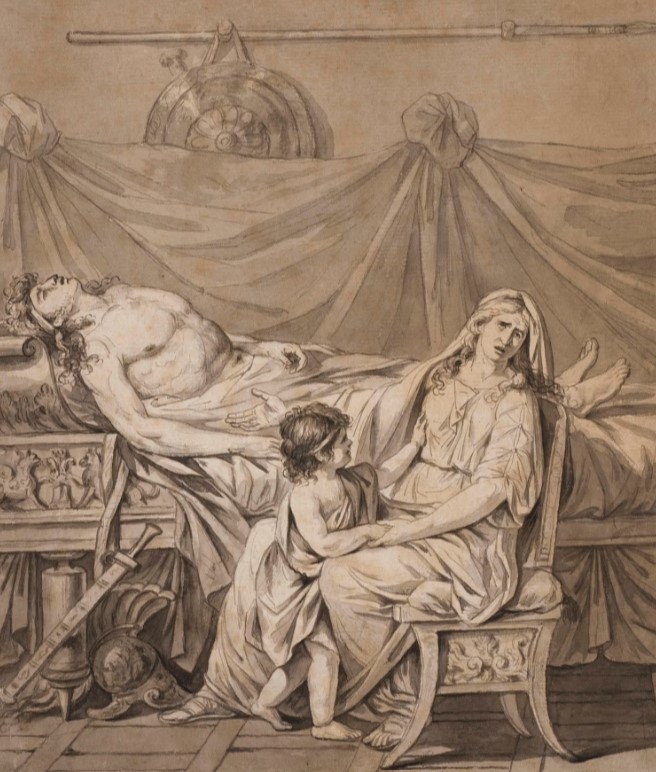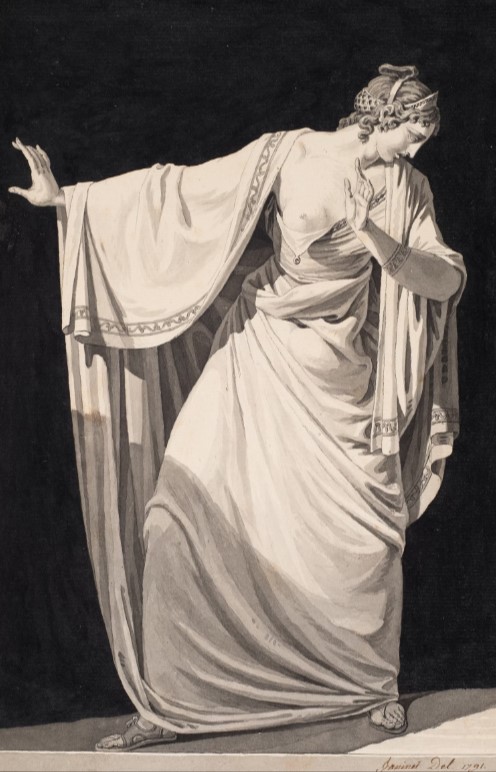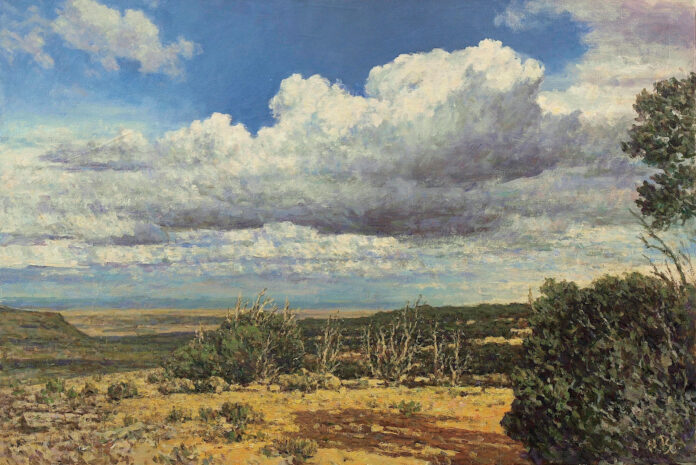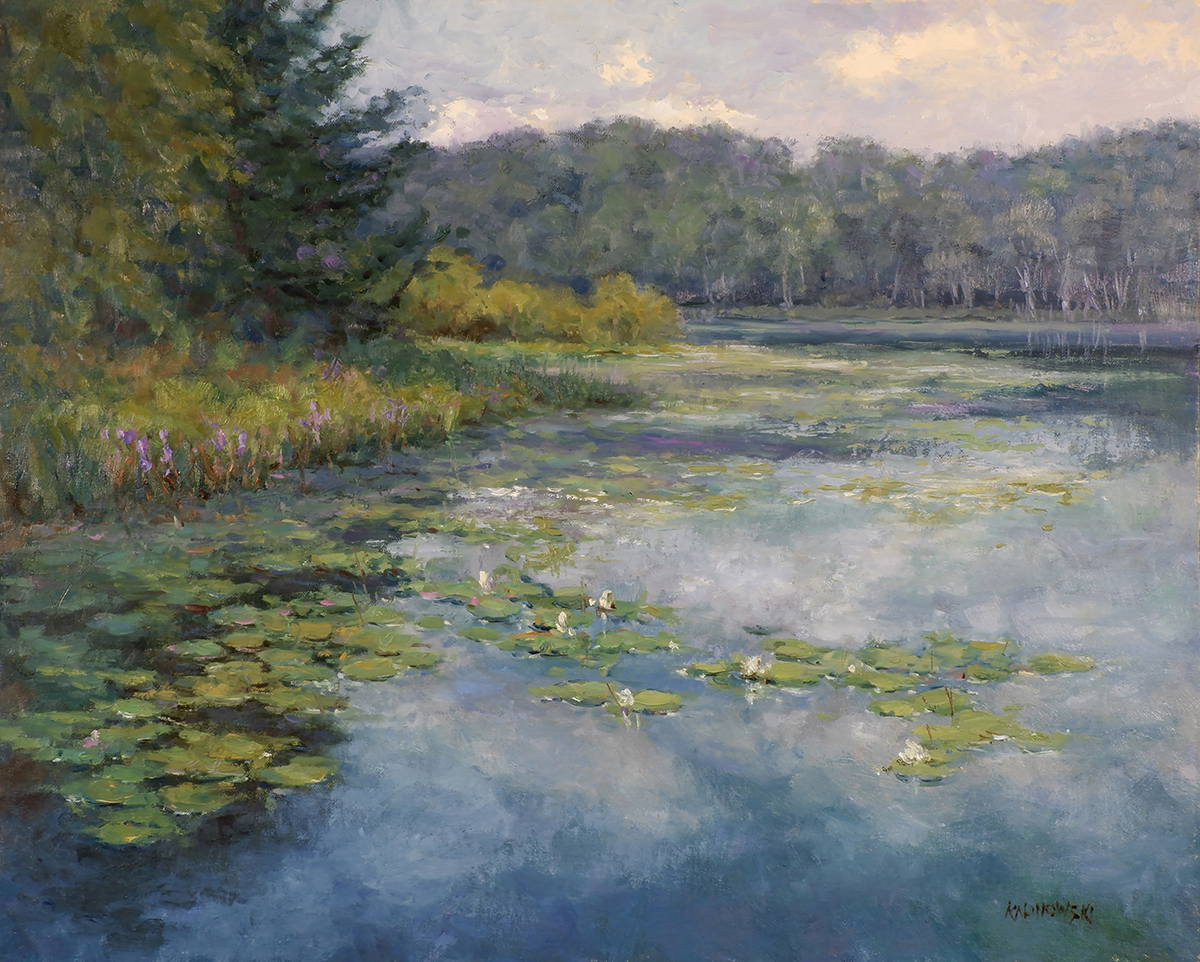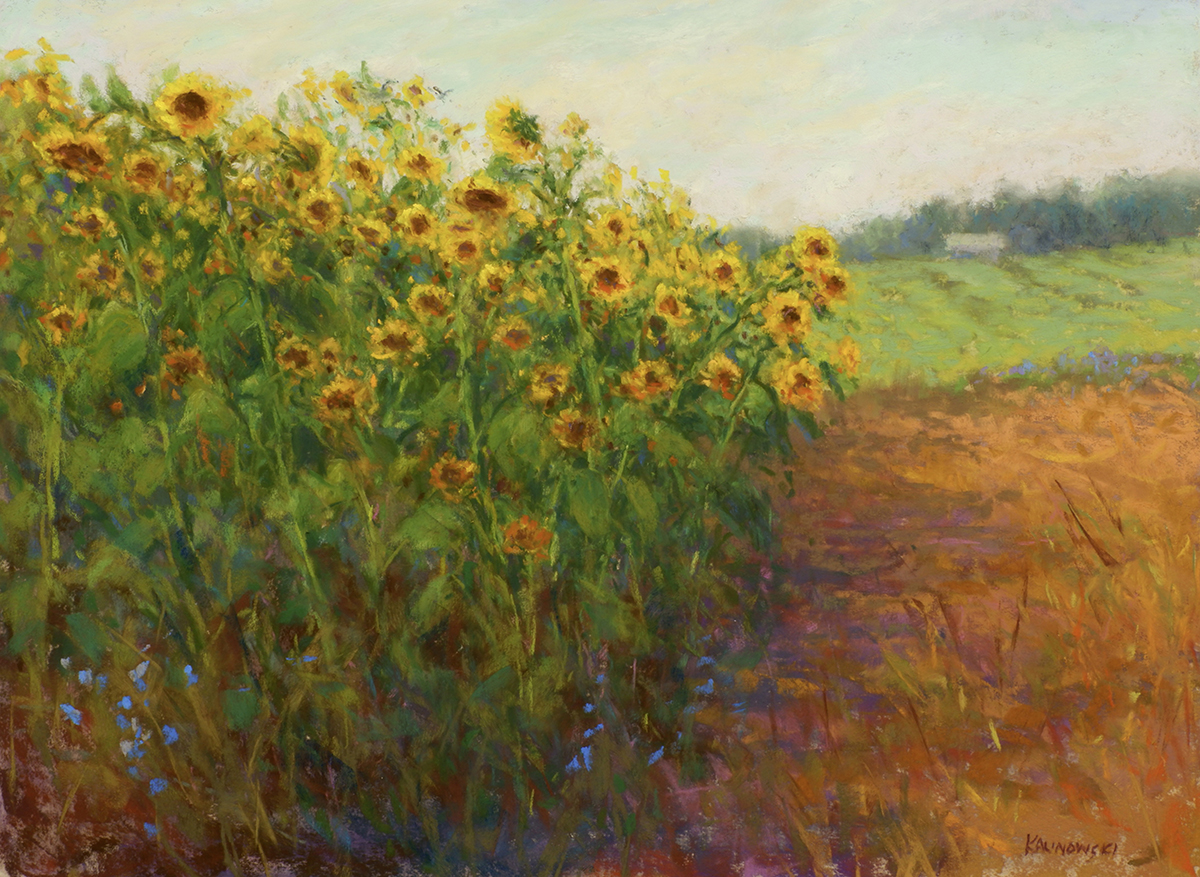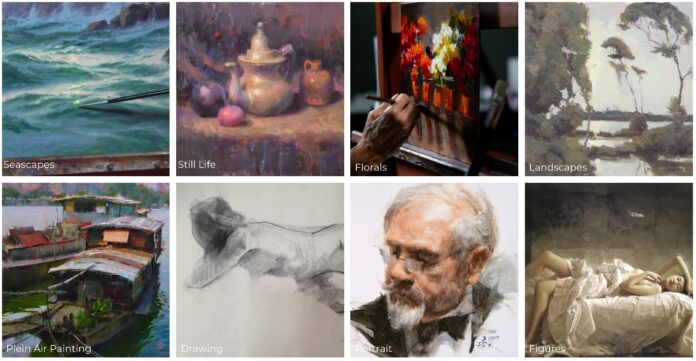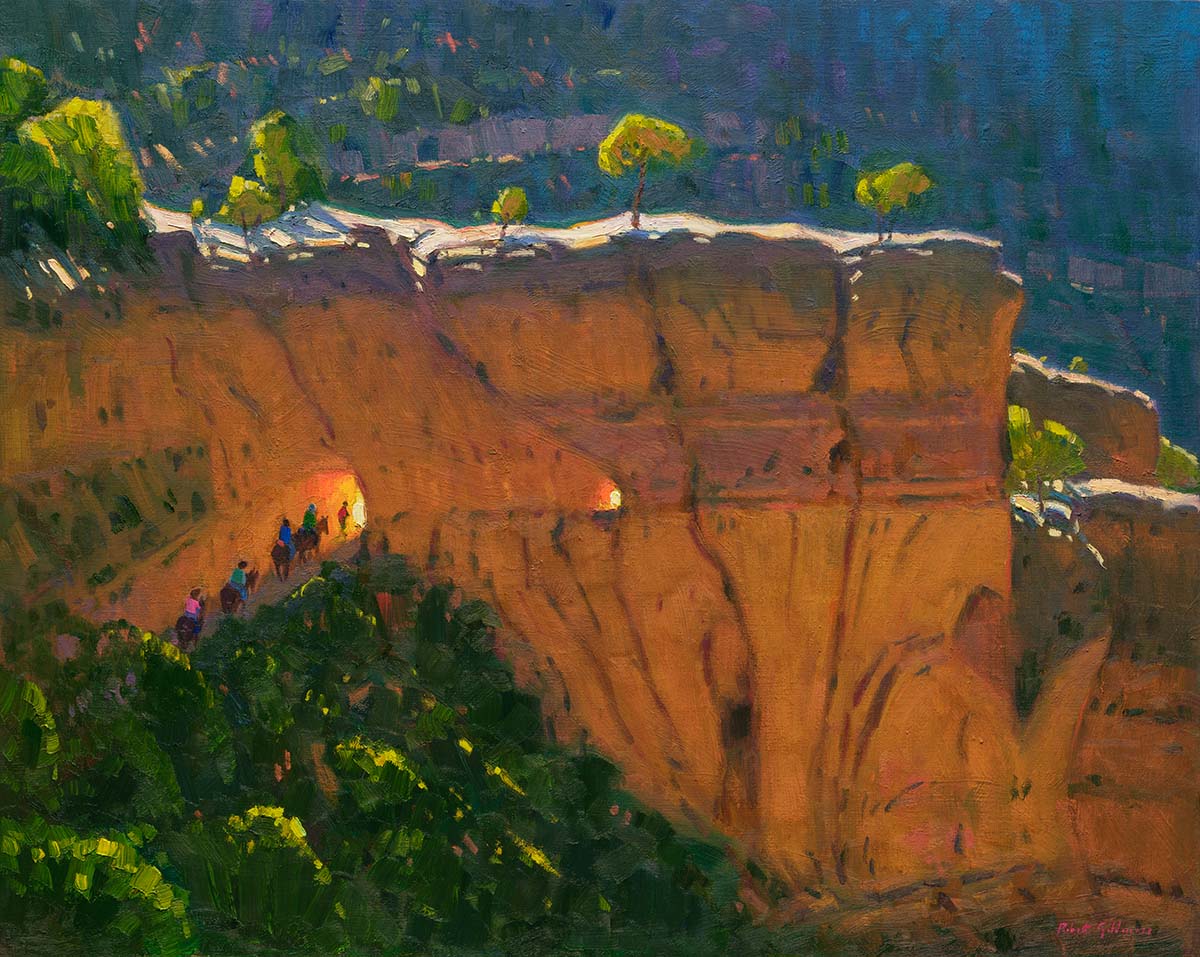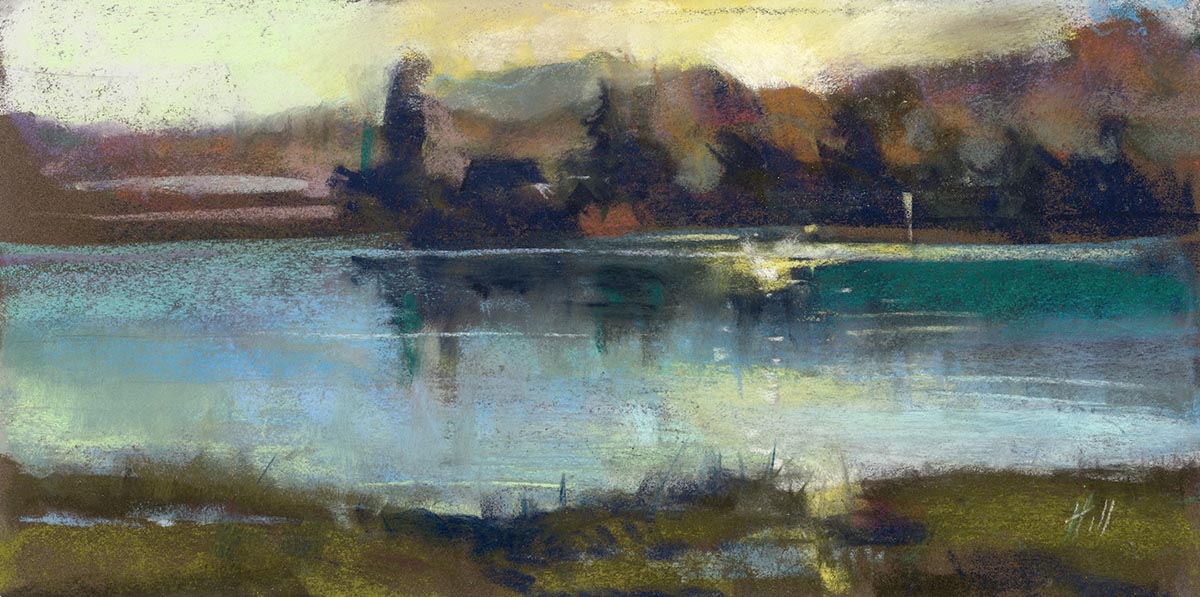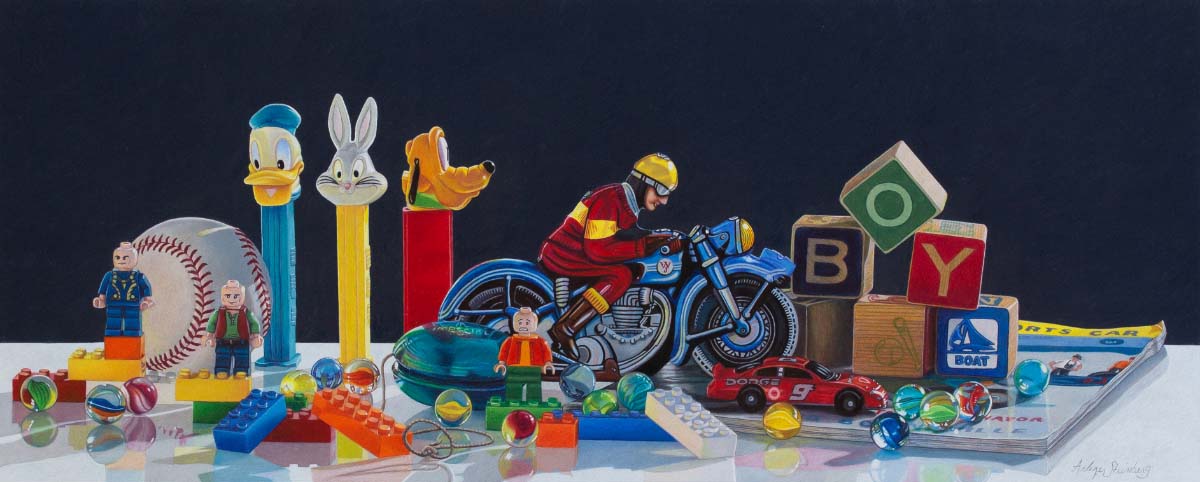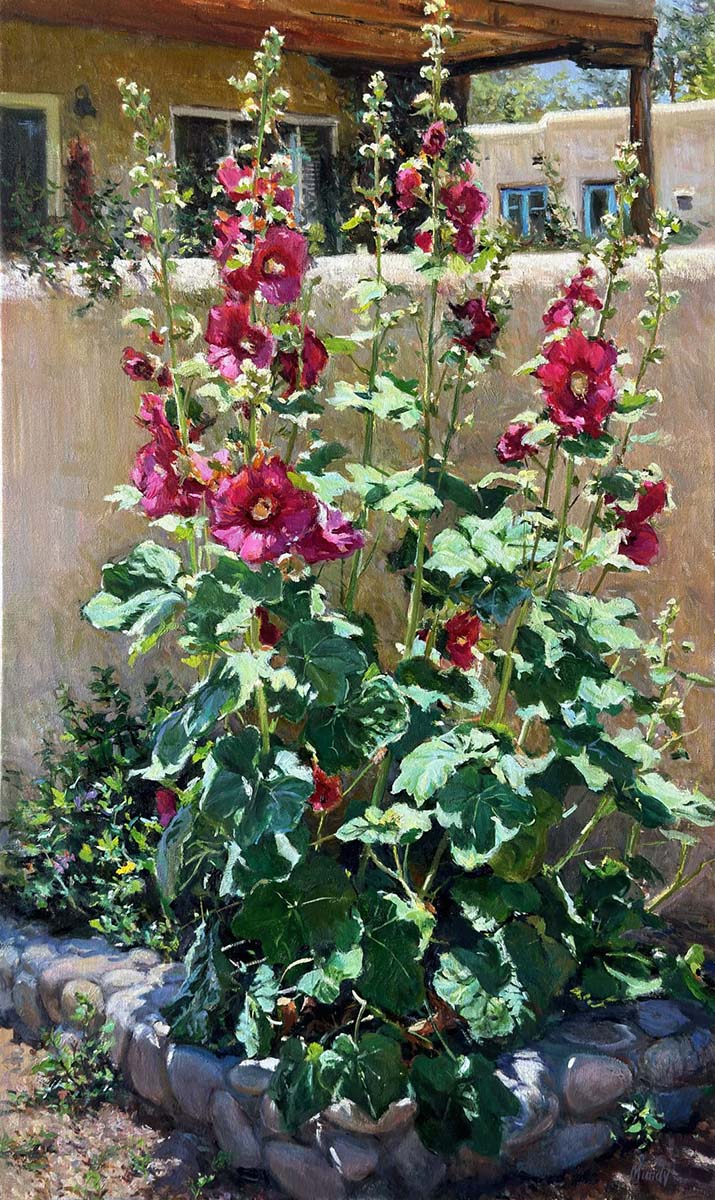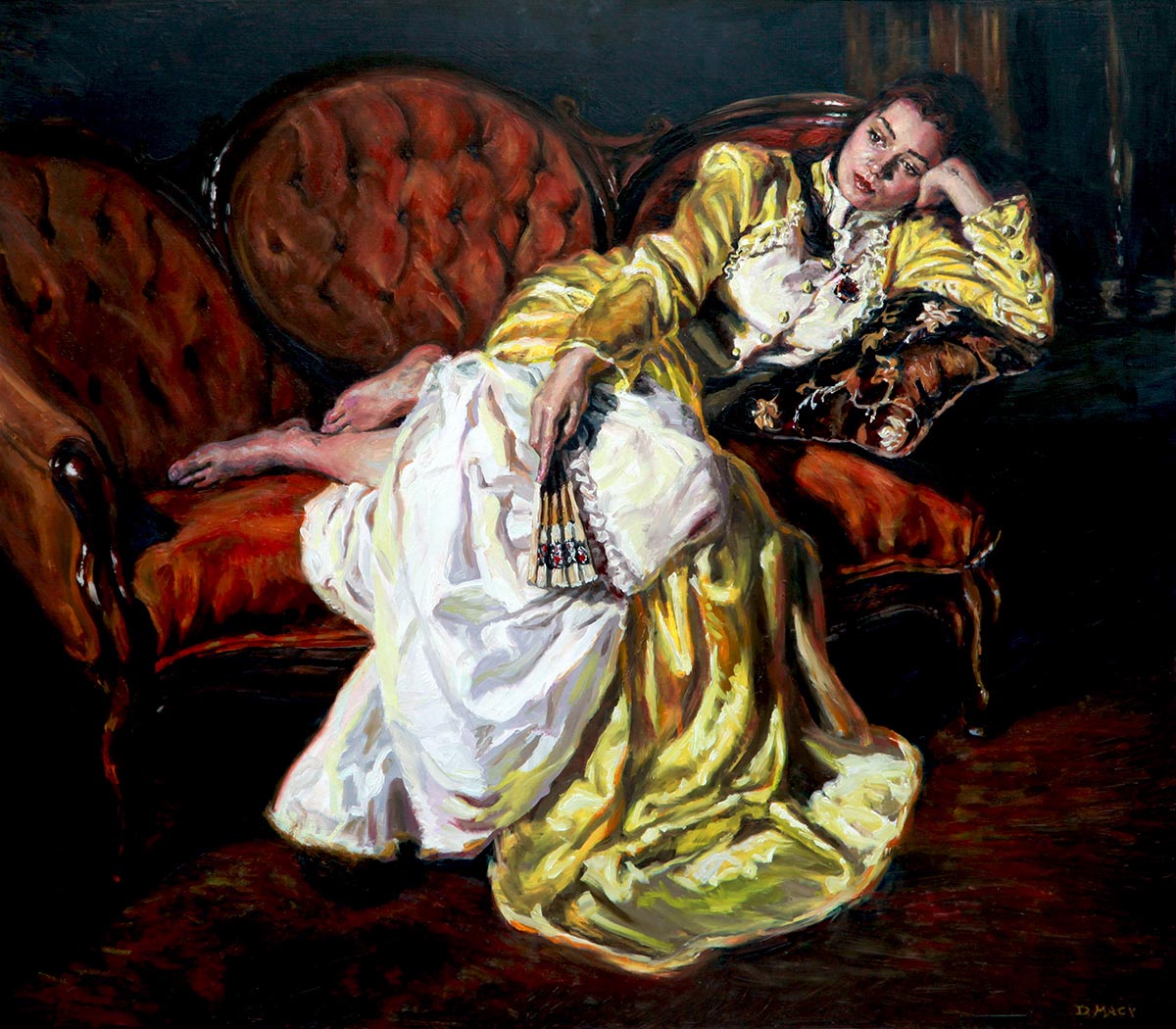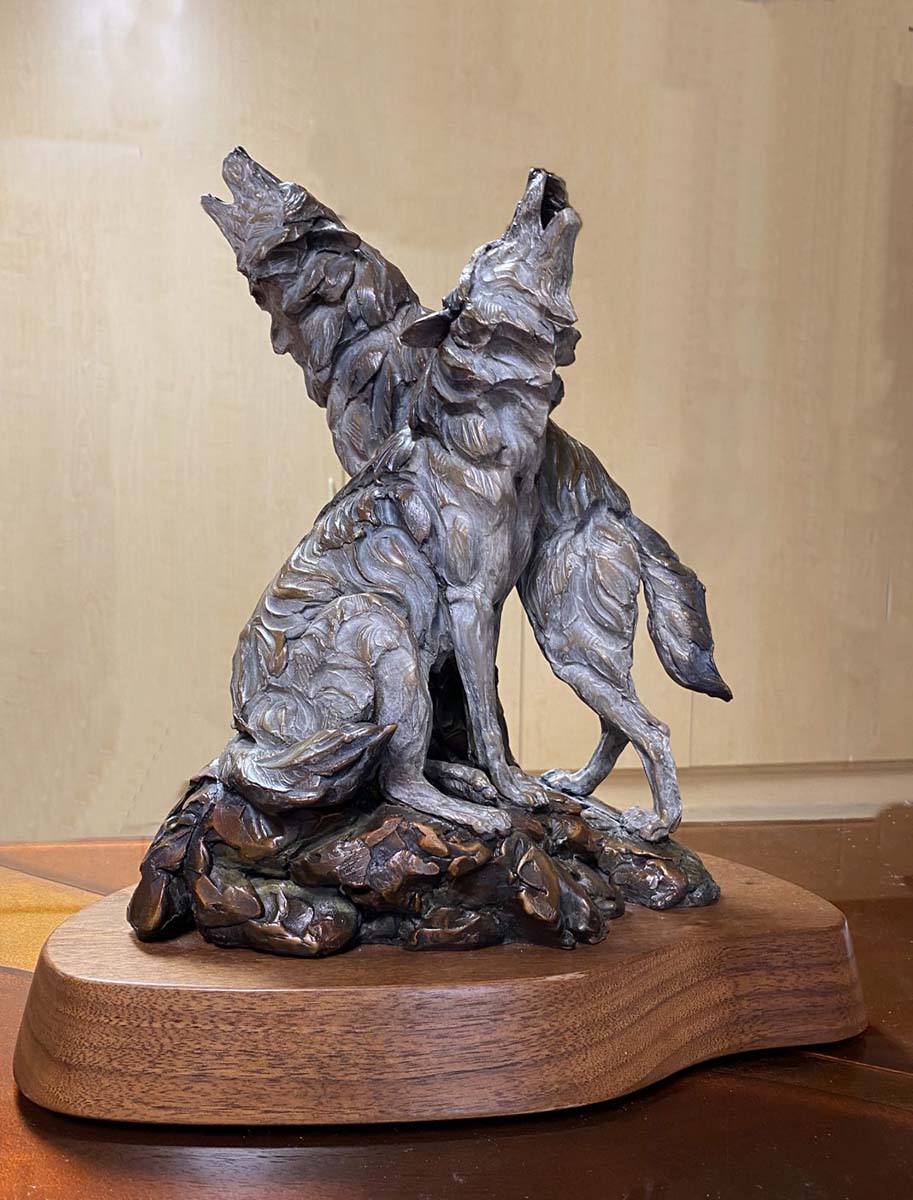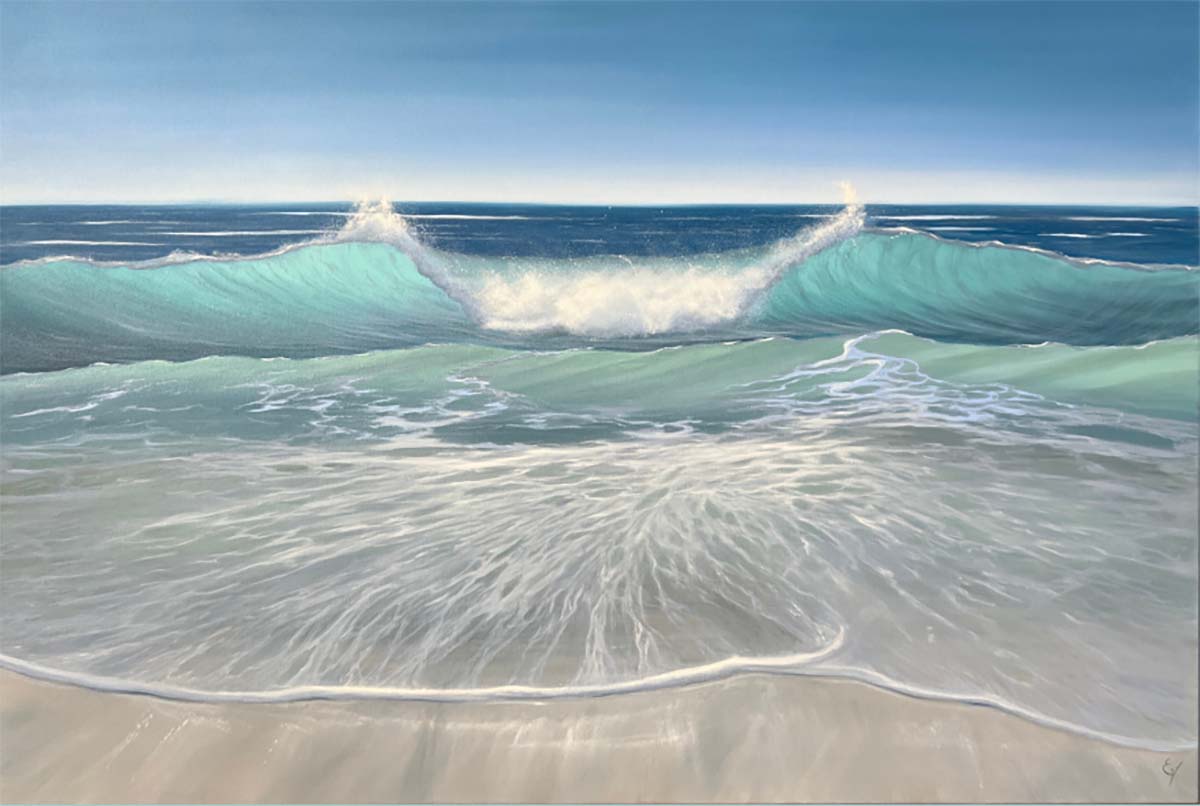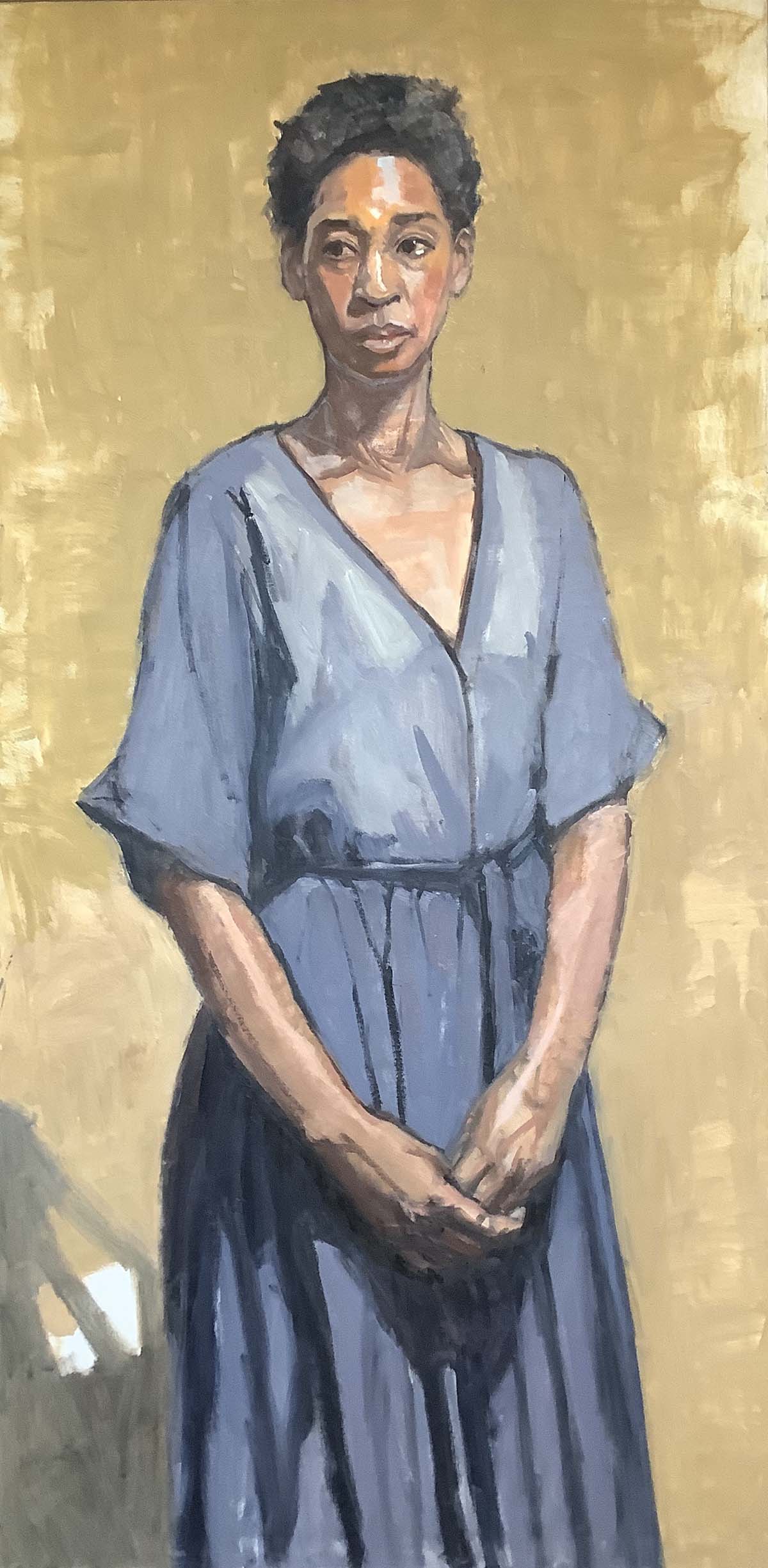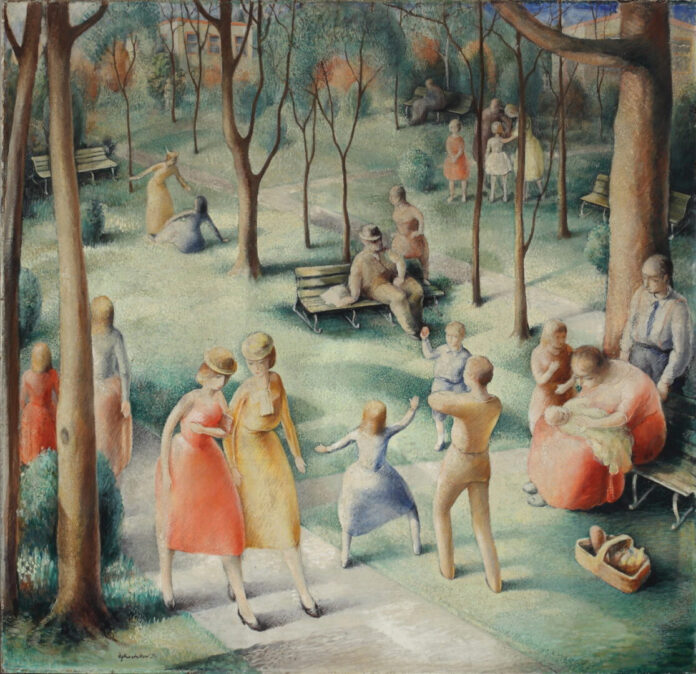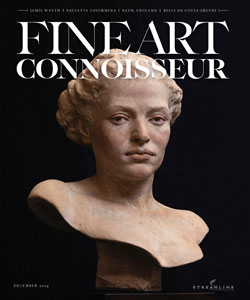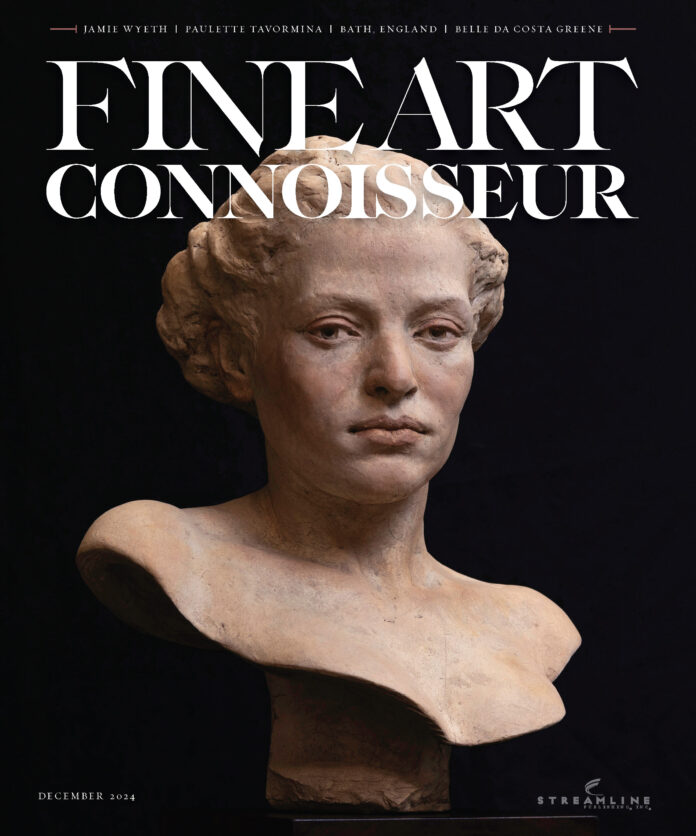We’d like to congratulate Susan Patton for winning Overall First Place in the September 2024 PleinAir Salon, judged by Kathie Odom.
“The story is front and center on this special painting,” Kathie said. “The idea is so out-of-the-box, even though this is everyday life for some. The best of edges, shapes, value, composition, movement… all there!! I love, love, love this painting!”
Behind the Scenes of “Still Stirring (at 93)”
By Susan Patton
My Inspiration
My grandmother, who I painted in this picture, and my grandfather, whom I called “Pop,” lived right up the hill from me when I grew up, and I kept a trail to their house year-round. My grandfather and my uncle, who lived with them, farmed the land around my home. I used to ride the combine and the bean truck to take the crop to the grain elevator with Pop and Uncle Dale. Gran (shown in this painting, “Still Stirring (at 93)”) would be home writing down the exact time of the sunrise and what the farmer guys were up to that day and the high and low temp on a calendar hung inside the kitchen cabinet door as she stirred together some lunch for the farmers and her “grands.”
I remember Pop turning up the glass of iced tea to get the last bit of tea (with a bit of lemonade added to it) and gulping it and then sitting the glass back down and getting up from the table, finding his hat, and going back to work. Years passed and my grandfather became ill with Alzheimer’s. He would walk down the road to find “home” and my uncle would follow him in the car a ways before pulling up next to him and offering a ride. He would thank him as he pulled back in the drive, then go in and take off his hat and sit down for a few minutes, then pick up his hat and start back again. After a long hard bout, my uncle and my grandmother made the decision to put him in a nursing home. But every morning my grandmother could be found in that same spot in the kitchen. She would fix his lunch, and my uncle would feed him and shave him, every day.
Eventually, he passed – to a new land where I’m sure he found a place for his hat, at Christ’s feet – because after his diagnosis but before he was really bad he asked my grandmother how to be saved. She said tears ran down his face as he asked Christ as his Savior. (His mother was a devout prayer warrior and I imagine it was her prayers answered – even at his old age.)
My uncle and my grandmother are left in the house now, but my uncle still farms – in multiple gardens instead of multiple acres. He can be found taking okra, tomatoes, and zinnias to the neighbors. Not sure what he does with all those tomatoes. My grandmother can be found “still stirring” up something for him to eat but with his help in getting stuff for her and as a sidekick in the kitchen. I found them the other day working together putting up pears.
I did this painting as a tribute to my grandmother, Ida Bell Stone Morgan, who today, at 99 now, can be found carefully “still stirring” around, and “stirring up” something to eat as she serves her family purely out of love.
Technically Speaking
This painting flowed fairly easily from start to finish. It was painted alla prima, in one sitting. My familiarity with the subject allowed me to paint how I saw the scene in my mind – as I saw it nearly every day of my childhood.
I began this piece by applying a layer of transparent dark wash and then wiping out the lights. I remember how Gran’s hair and posture seemed to just appear. I remember adding the details on the stove but not on her face because her posture and arthritic hand told volumes.
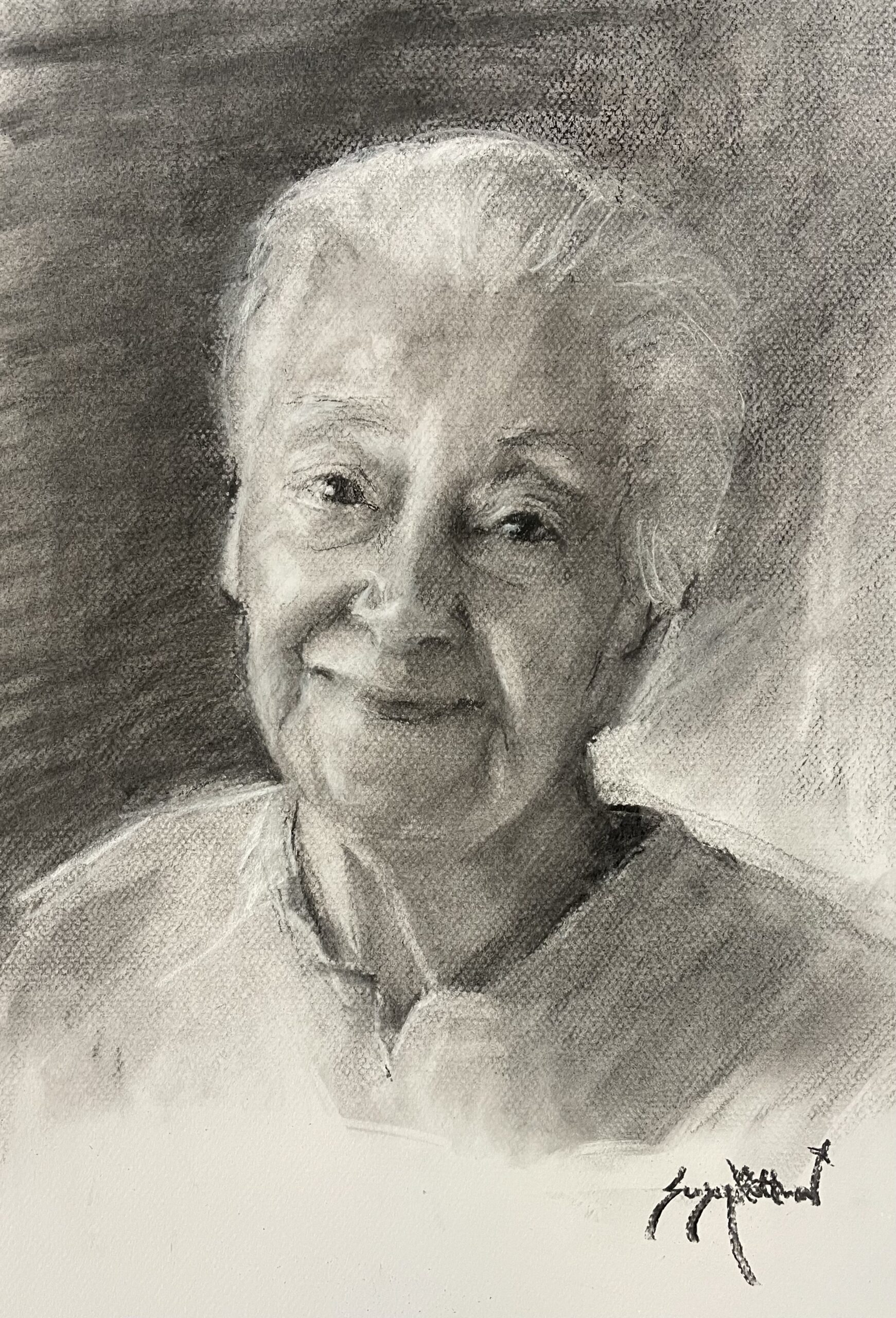
On Winning in the Monthly PleinAir Salon
My first thought was, “Did I read that right?” But mostly, winning this award with this particular painting of my grandmother means the world to me. I have recently been planning to put together a book of paintings and writings that record memories of my childhood that others can relate to, so this award has just confirmed this calling. I am so grateful!
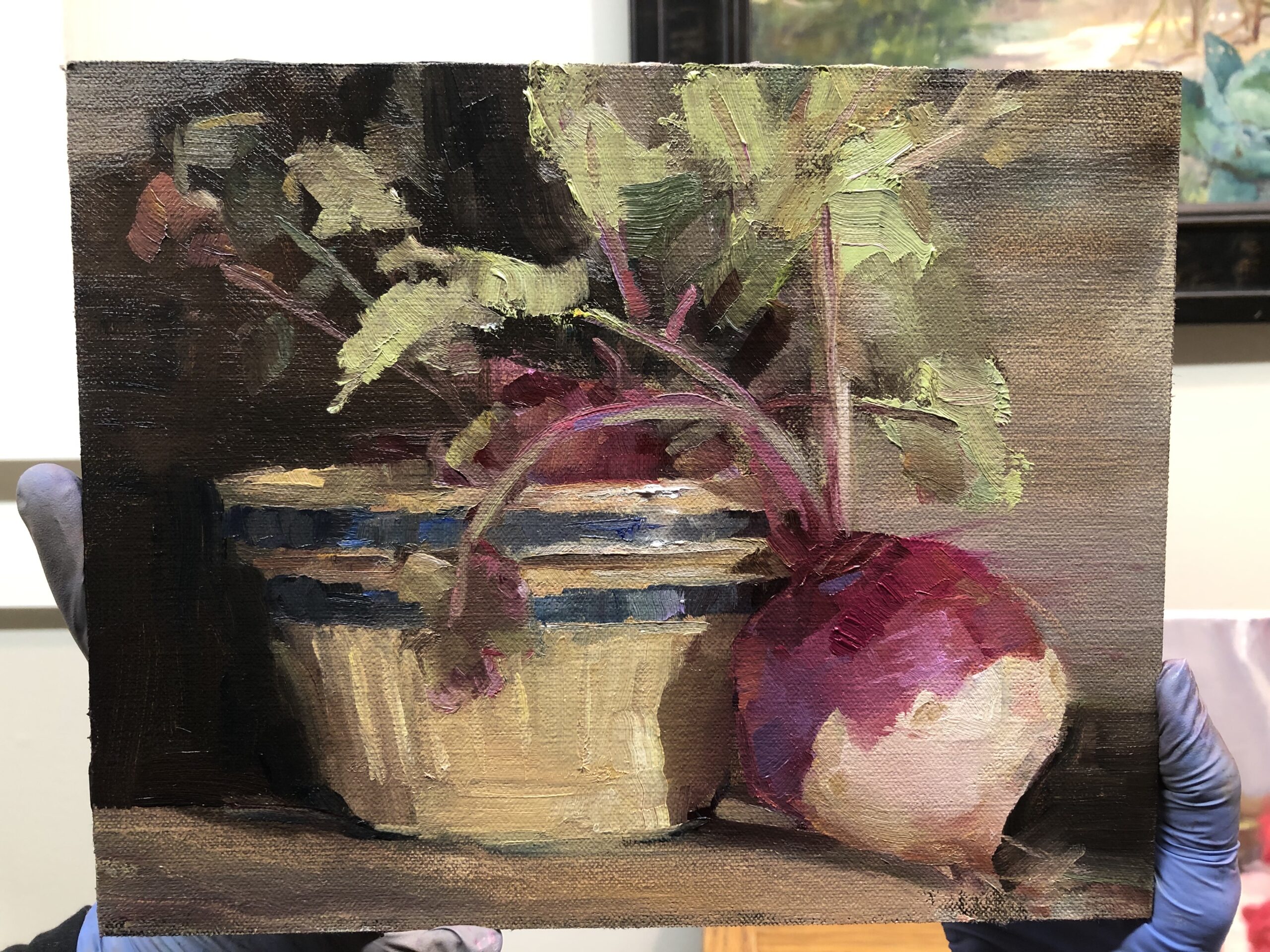

If You’re Considering Entering the PleinAir Salon:
Enter! I have entered multiple times. You just never know!
My art education began with watching my artist mother, Dot Courson, and then continued through professional workshops with master artists across the US. I have an art studio in North Mississippi. I am also a Registered Physical Therapist and worked in that field for 20 years, but I have been working full-time as an artist and workshop instructor for the past six years. I never went to art school, but I love teaching art as much as painting. I think it is because I love people, and people are my favorite subject to paint.
Connect with Susan Patton: www.susanpattonart.com
About the PleinAir Salon:
In the spirit of the French Salon created by the Academie des Beaux-Arts in Paris, this annual online art competition, with 11 monthly cycles, leading to the annual Salon Grand Prize winners, is designed to stimulate artistic growth through competition. The PleinAir® Salon rewards artists with $50,000 in cash prizes and exposure of their work, with the winning painting featured on the cover of PleinAir® Magazine.
Winners in each monthly competition may receive recognition and exposure through PleinAir Magazine’s print magazine, e-newsletters, websites, and social media. Winners of each competition will also be entered into the annual competition. The Annual Awards will be presented live at the next Plein Air Convention & Expo.
The next round of the PleinAir Salon has begun so hurry, as this competition ends on the last day of the month. Enter your best art in the PleinAir Salon here.



